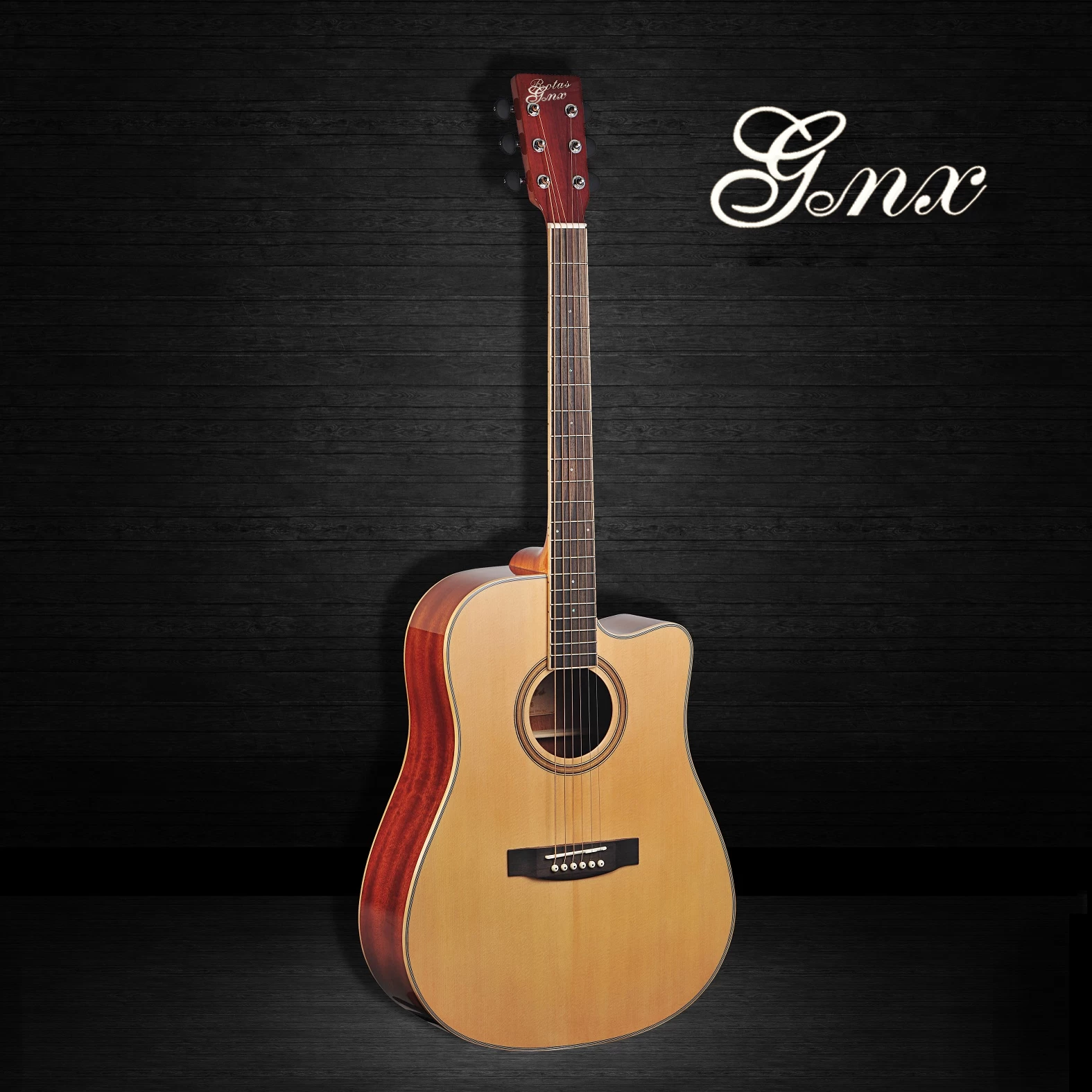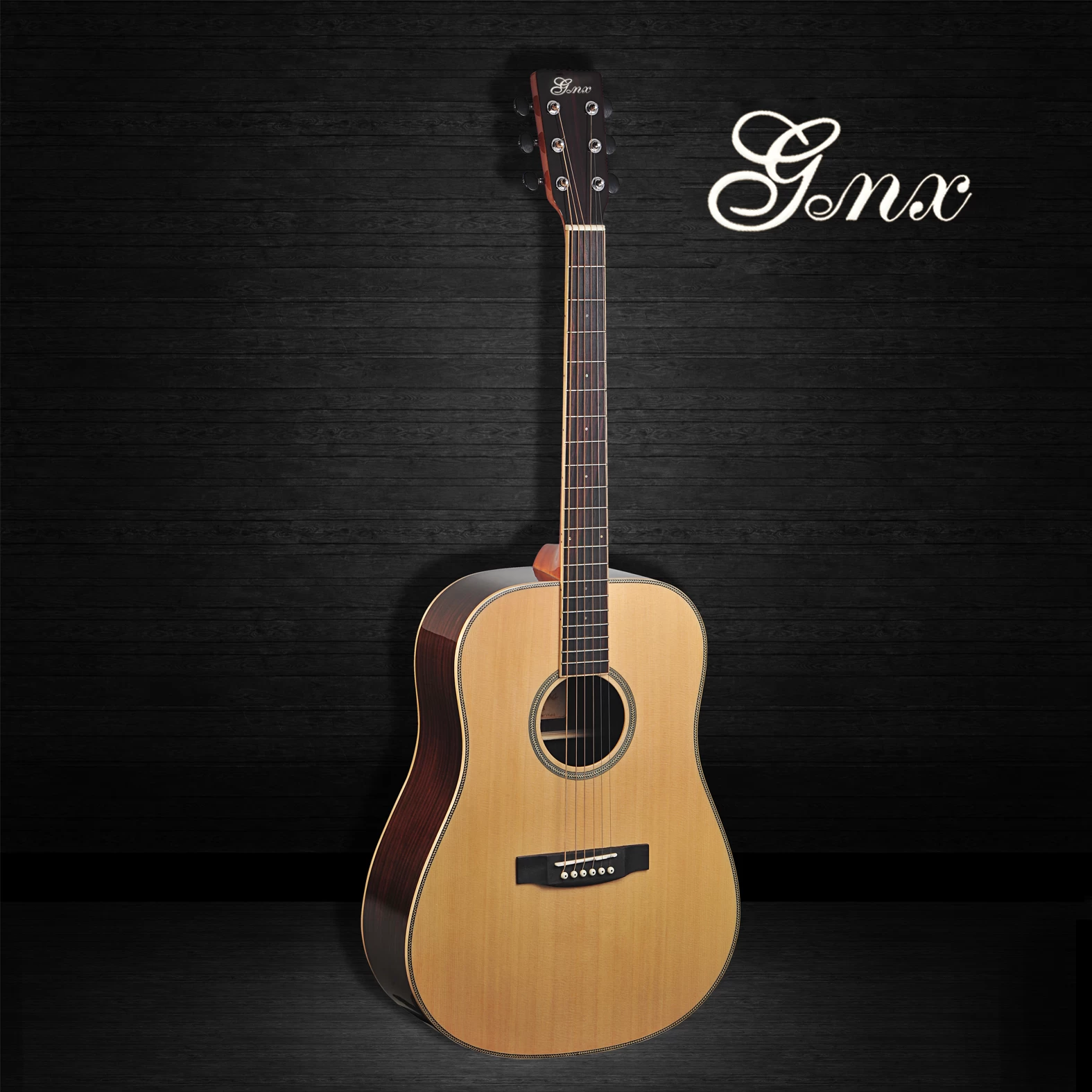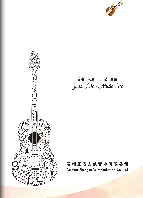Guitar beginners must understand the ten basic knowledge
2017-12-08 10:28:22
Practice the scale
First learn to sing prospective Do, Re, Mi ... ... every day to climb the plaid, practice a variety of finger type. Then find a few of your favorite songs and practice singing their melodies. At the same time, try to find out the location of these tones on the guitar, practice playing with the color. This practice will help you to sing the phonetic scales. At the same time, you have inadvertently laid a good foundation for you to play improvised Solo in the future. When playing the gorgeous, to use the skills you have just learned. This will be of great help to your progress.
Sing name: 1 2 3 4 5 6 7 1. No matter in that tone, we must use the "first name singing method." In other words, no matter how high the sound is, you have to sing it 1 2 3 4 5 6 7 1. Tone name: C D E F G AB C (C only); G A B C D E #F G (G only); A B #C D E # F bA A (A only) The following is analogous.
Practice rhythm
Listen to some music. Usually nothing happens, you can quietly feel your heartbeat. Count with the heart: 1 2 3 4 Try to beat. Practicing decomposition of chords on a guitar helps to keep pace quickly and accurately. After breaking down the chord bounce, practice the strumming. Sweep simple rhythm, skilled, practice a variety of character points and pause and cut sound, rhythm of rhythm. Then practice the rhythm of 3 Lilo, 5 Lilo, 6 Lilo, 7 Lilo, 8 Lilo, 12 Lilo. Contrast with the original soundtrack! Correct your own mistakes.
If, above the triplet and so can do, then, basically, your guitar level is already very good. If you can not do that, focus on what you think is harder. Break it.
Cut the sound
As for the cut tone, there is the right cut and left cut. The right-hand cut is suitable for any open chord and closed chord.
The right way to cut sound is:
1. With the palm of your hand on the palm of your hand, stop the vibrating strings and form a cut tone. Generally used for strumming down.
2. With a small finger palms palm part of the palm of the hand to stop the vibration of the strings, the formation of cut sound. It is generally used to sweep the strings upward, occasionally to sweep strings downward.
3. With the palm of the palm of the hand to stop the vibrating strings, forming a cut sound. Generally, a single finger of the right index finger strums downwards. The method of strumming is: P (thumbs) points down the bass strings, i (index fingers) points down the treble strings and cuts the rhythm pattern.
The left-hand cut is suitable for closed chords, but masters often use the left-hand cut for open chords.
Specific method of left-handed cut is:
1. Enclosed chord: Swing the strings with your right hand and quickly relax the strings with your left hand. Reduce the intensity of the chord, but the fingers can not leave the strings. Suddenly stopped the chord sound, forming a cut sound.
2. Open the chords: If the lower position of the C, Am, G, Dm, E and other chords, the right hand swept the strings, the left hand quickly relax the strings, reduce the intensity by the chord, but the fingers can not leave the strings. Left hand quickly turned his wrist, toward the direction away from their own, with the string of fingers covered the strings, while the little finger of the left hand can be assisted with the cross on the strings. Suddenly stopped the chord sound, forming a cut sound.
4 muffled: also known as the system
That is, using the little finger of the palm of your right hand slightly to the side of the fishline, gently press the strings in the proper position near the piano code. At the same time, use your right hand to play a broken chord or a strummed rhythm. At this moment, the sound of the voice is a little boring. However, there is pitch. With the left hand, that is, mainly refers to the horizontal chords.
Hold the strings with your left hand and press the strings, but you can not push too hard and you can not press the strings completely over the fingerboard. Just relax a bit. At the same time, use your right hand to play a broken chord or a strummed rhythm. At this moment, the sound of the voice is a little boring. However, there is pitch.
Mute sound
For the same way muffled, virtual press live strings, the right hand mainly for the strumming rhythm. The sound of sweeping is a kind of stringing sound, it has no pitch. Is like scraping wood comb children's voice. This is basically the case I think it should be clear that I should be speaking.
6. overtone
Harmonic sound sounds like a bell! Sounds good to hear, but also very unique. You can add a lot of color for your music. The overtone is used at the end of the music or at half-time. Of course, this is not necessarily the same, as Liu Chuan's> overtones used at the end. There are so two in the guitar solos> overtones. Wang Feng's "fireworks" prelude are played by artificial harmonic. If it is an electric guitar, then overtones are even more. Plectrum can be scraped with picks, you can also squeeze overtones.
Natural overtone:
Gently touch one of the 6 strings of the guitar with one finger (usually a little finger or ring finger) of the left hand (and sometimes with the right hand) (also slightly flanking the guitar) It is not allowed to press the string directly above the string at the 12th product of the empty string, nor do the fingers touch the string. Dial the strings with your right hand. At the same time picking the string, the finger touching the string quickly leaves like a flash of lightning. When leaving, the string of finger touching the string gently rubs the string.
Note: All the above actions are done in one go, to be consistent. To be completed in an instant, otherwise, it is impossible to have enough overtones. In addition to the 12th, in the 5th, 7th, 9th, 19th and other positions can also play overtones.
Artificial harmonic:
Hold down the left hand with a string of products, the right hand with the index finger gently touching the touch of the root of the string above the grade 12 position. The right index finger can not press the string, it can not touch the strings. The right hand with another finger (middle finger or ring finger, the general use of ring finger, multi-purpose use in the middle finger.) Dial the strings. In the plectrum at the same time, the chord's right index finger quickly left like lightning instant, left, right index finger belly gently "rub" string.
Note: All the above actions are done in one go. To be consistent. To be completed in an instant. Otherwise, it is impossible to have a harmonic tone.
7. Quick conversion of chords
Temporarily not be able to map fast. Slowly practice the prospective per chord. Virtual press and real alternating repeated practice. To be accurate before you can speed up. Repeat 50--100 times for each chord repeatedly. Hold for a week, or a month's time. Break through the more difficult chords for you. Especially horizontal chords. A week or a month later, you will find it easier to press these chords again than before. Then you can speed up the practice of chords conversion. It is also necessary to be persistent to make progress. Come on!
Speed
There is no other way but to practice more if you want to improve your speed. There is no other shortcut. Is absolutely not lazy.
Or use the "hell-like crazy torture practice method" with the fastest speed splendid Choi Choi 3 hours, and then eat something, then 3 hours, go to convenient, come back and practice for 3 hours, and then see A while TV, after reading, and then practice 3 hours. This cycle.
At this time is the quantity, not the quality. Accumulate so much more. Then slow down, the pursuit of quality, to be stable and accurate. When it's accurate, speed up until it's as fast as you can with the Hellfire Crazy Exercises. However, this method is only suitable for some individual students. It may be torture for most people. This is not a particularly good idea. Try it if you find it useful. Feel boring people can not see. You can be joking as me. This moderator likes to joke. Of course, the above practice time and frequency are set by yourselves.
The best way is to practice a variety of scales or more, Huacai, climbing lattice, with different fingering, playing the melody in different positions, often for finger exercises. In the absence of a piano, use a wrist or a book as a piano practice fingering. A long time, naturally, will be fast
9. Back spectrum
Back spectrum must be done. Can only play more, the music spectrum background. Let your finger have feelings for this score. After you are proficient, even if you forget the following how to play, but your fingers will naturally fall. Because your finger is good at playing this score, it will remember the score. Practice a lot. Can not be lazy
You can also find a better friend than you play, you practice the score at the same time. Then, play this score with him. When you forget, see how he is playing. This will give you some reminders. Moreover, the effect of two people working together is much better than one's practice. You will progress rapidly.
In addition, listen to more music, more try to hear the music you hear, use the scale to sing out. Learn more about music theory. More music books. More brains pondering, ask yourself why a few. Try to answer yourself. Multi-analysis, why the author to arrange music like this, why should we arrange chord accompaniment, creator's allocation of ideas? Experience their creative intent. Only in this way can improve fast. Come on!
More exchanges with fellow human beings. More to go to the piano, there will not be something, ask where the supremacy.
10. Colorful
Practice Choi Choi suggestions:
1. If you have an original soundtrack, listen to the original soundtrack several times. Make a deep impression of this melody in the brain and keep it firmly in mind.
2. Huacai guitar spectrum proficiency recite, can not read the spectrum to play it well and skillfully down.
3. Note the use of sound and a variety of techniques, such as knocking string, pull string, slippery sound and so on.
4. Control the original soundtrack and play along with the original soundtrack to see where the original soundtrack is not the same. Find the problem, correct it.
5. Try to meditate on the beat in the heart until it matches the original soundtrack.
6. Try not to listen to the original soundtrack, you can use the metronome to control the tempo and speed. The company is located in:
First learn to sing prospective Do, Re, Mi ... ... every day to climb the plaid, practice a variety of finger type. Then find a few of your favorite songs and practice singing their melodies. At the same time, try to find out the location of these tones on the guitar, practice playing with the color. This practice will help you to sing the phonetic scales. At the same time, you have inadvertently laid a good foundation for you to play improvised Solo in the future. When playing the gorgeous, to use the skills you have just learned. This will be of great help to your progress.
Sing name: 1 2 3 4 5 6 7 1. No matter in that tone, we must use the "first name singing method." In other words, no matter how high the sound is, you have to sing it 1 2 3 4 5 6 7 1. Tone name: C D E F G AB C (C only); G A B C D E #F G (G only); A B #C D E # F bA A (A only) The following is analogous.
Practice rhythm
Listen to some music. Usually nothing happens, you can quietly feel your heartbeat. Count with the heart: 1 2 3 4 Try to beat. Practicing decomposition of chords on a guitar helps to keep pace quickly and accurately. After breaking down the chord bounce, practice the strumming. Sweep simple rhythm, skilled, practice a variety of character points and pause and cut sound, rhythm of rhythm. Then practice the rhythm of 3 Lilo, 5 Lilo, 6 Lilo, 7 Lilo, 8 Lilo, 12 Lilo. Contrast with the original soundtrack! Correct your own mistakes.
If, above the triplet and so can do, then, basically, your guitar level is already very good. If you can not do that, focus on what you think is harder. Break it.
Cut the sound
As for the cut tone, there is the right cut and left cut. The right-hand cut is suitable for any open chord and closed chord.
The right way to cut sound is:
1. With the palm of your hand on the palm of your hand, stop the vibrating strings and form a cut tone. Generally used for strumming down.
2. With a small finger palms palm part of the palm of the hand to stop the vibration of the strings, the formation of cut sound. It is generally used to sweep the strings upward, occasionally to sweep strings downward.
3. With the palm of the palm of the hand to stop the vibrating strings, forming a cut sound. Generally, a single finger of the right index finger strums downwards. The method of strumming is: P (thumbs) points down the bass strings, i (index fingers) points down the treble strings and cuts the rhythm pattern.
The left-hand cut is suitable for closed chords, but masters often use the left-hand cut for open chords.
Specific method of left-handed cut is:
1. Enclosed chord: Swing the strings with your right hand and quickly relax the strings with your left hand. Reduce the intensity of the chord, but the fingers can not leave the strings. Suddenly stopped the chord sound, forming a cut sound.
2. Open the chords: If the lower position of the C, Am, G, Dm, E and other chords, the right hand swept the strings, the left hand quickly relax the strings, reduce the intensity by the chord, but the fingers can not leave the strings. Left hand quickly turned his wrist, toward the direction away from their own, with the string of fingers covered the strings, while the little finger of the left hand can be assisted with the cross on the strings. Suddenly stopped the chord sound, forming a cut sound.
4 muffled: also known as the system
That is, using the little finger of the palm of your right hand slightly to the side of the fishline, gently press the strings in the proper position near the piano code. At the same time, use your right hand to play a broken chord or a strummed rhythm. At this moment, the sound of the voice is a little boring. However, there is pitch. With the left hand, that is, mainly refers to the horizontal chords.
Hold the strings with your left hand and press the strings, but you can not push too hard and you can not press the strings completely over the fingerboard. Just relax a bit. At the same time, use your right hand to play a broken chord or a strummed rhythm. At this moment, the sound of the voice is a little boring. However, there is pitch.
Mute sound
For the same way muffled, virtual press live strings, the right hand mainly for the strumming rhythm. The sound of sweeping is a kind of stringing sound, it has no pitch. Is like scraping wood comb children's voice. This is basically the case I think it should be clear that I should be speaking.
6. overtone
Harmonic sound sounds like a bell! Sounds good to hear, but also very unique. You can add a lot of color for your music. The overtone is used at the end of the music or at half-time. Of course, this is not necessarily the same, as Liu Chuan's> overtones used at the end. There are so two in the guitar solos> overtones. Wang Feng's "fireworks" prelude are played by artificial harmonic. If it is an electric guitar, then overtones are even more. Plectrum can be scraped with picks, you can also squeeze overtones.
Natural overtone:
Gently touch one of the 6 strings of the guitar with one finger (usually a little finger or ring finger) of the left hand (and sometimes with the right hand) (also slightly flanking the guitar) It is not allowed to press the string directly above the string at the 12th product of the empty string, nor do the fingers touch the string. Dial the strings with your right hand. At the same time picking the string, the finger touching the string quickly leaves like a flash of lightning. When leaving, the string of finger touching the string gently rubs the string.
Note: All the above actions are done in one go, to be consistent. To be completed in an instant, otherwise, it is impossible to have enough overtones. In addition to the 12th, in the 5th, 7th, 9th, 19th and other positions can also play overtones.
Artificial harmonic:
Hold down the left hand with a string of products, the right hand with the index finger gently touching the touch of the root of the string above the grade 12 position. The right index finger can not press the string, it can not touch the strings. The right hand with another finger (middle finger or ring finger, the general use of ring finger, multi-purpose use in the middle finger.) Dial the strings. In the plectrum at the same time, the chord's right index finger quickly left like lightning instant, left, right index finger belly gently "rub" string.
Note: All the above actions are done in one go. To be consistent. To be completed in an instant. Otherwise, it is impossible to have a harmonic tone.
7. Quick conversion of chords
Temporarily not be able to map fast. Slowly practice the prospective per chord. Virtual press and real alternating repeated practice. To be accurate before you can speed up. Repeat 50--100 times for each chord repeatedly. Hold for a week, or a month's time. Break through the more difficult chords for you. Especially horizontal chords. A week or a month later, you will find it easier to press these chords again than before. Then you can speed up the practice of chords conversion. It is also necessary to be persistent to make progress. Come on!
Speed
There is no other way but to practice more if you want to improve your speed. There is no other shortcut. Is absolutely not lazy.
Or use the "hell-like crazy torture practice method" with the fastest speed splendid Choi Choi 3 hours, and then eat something, then 3 hours, go to convenient, come back and practice for 3 hours, and then see A while TV, after reading, and then practice 3 hours. This cycle.
At this time is the quantity, not the quality. Accumulate so much more. Then slow down, the pursuit of quality, to be stable and accurate. When it's accurate, speed up until it's as fast as you can with the Hellfire Crazy Exercises. However, this method is only suitable for some individual students. It may be torture for most people. This is not a particularly good idea. Try it if you find it useful. Feel boring people can not see. You can be joking as me. This moderator likes to joke. Of course, the above practice time and frequency are set by yourselves.
The best way is to practice a variety of scales or more, Huacai, climbing lattice, with different fingering, playing the melody in different positions, often for finger exercises. In the absence of a piano, use a wrist or a book as a piano practice fingering. A long time, naturally, will be fast
9. Back spectrum
Back spectrum must be done. Can only play more, the music spectrum background. Let your finger have feelings for this score. After you are proficient, even if you forget the following how to play, but your fingers will naturally fall. Because your finger is good at playing this score, it will remember the score. Practice a lot. Can not be lazy
You can also find a better friend than you play, you practice the score at the same time. Then, play this score with him. When you forget, see how he is playing. This will give you some reminders. Moreover, the effect of two people working together is much better than one's practice. You will progress rapidly.
In addition, listen to more music, more try to hear the music you hear, use the scale to sing out. Learn more about music theory. More music books. More brains pondering, ask yourself why a few. Try to answer yourself. Multi-analysis, why the author to arrange music like this, why should we arrange chord accompaniment, creator's allocation of ideas? Experience their creative intent. Only in this way can improve fast. Come on!
More exchanges with fellow human beings. More to go to the piano, there will not be something, ask where the supremacy.
10. Colorful
Practice Choi Choi suggestions:
1. If you have an original soundtrack, listen to the original soundtrack several times. Make a deep impression of this melody in the brain and keep it firmly in mind.
2. Huacai guitar spectrum proficiency recite, can not read the spectrum to play it well and skillfully down.
3. Note the use of sound and a variety of techniques, such as knocking string, pull string, slippery sound and so on.
4. Control the original soundtrack and play along with the original soundtrack to see where the original soundtrack is not the same. Find the problem, correct it.
5. Try to meditate on the beat in the heart until it matches the original soundtrack.
6. Try not to listen to the original soundtrack, you can use the metronome to control the tempo and speed. The company is located in:









